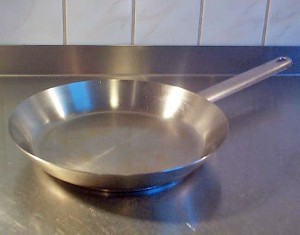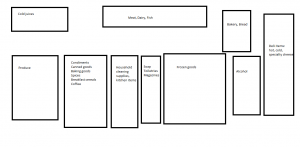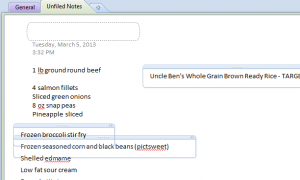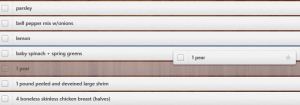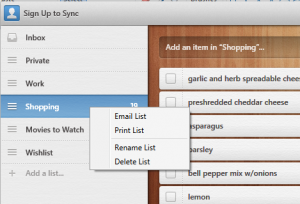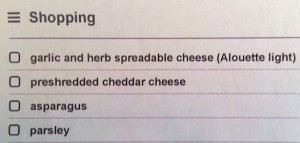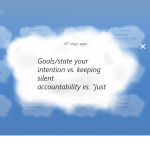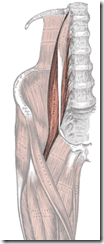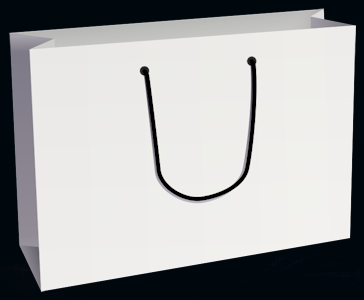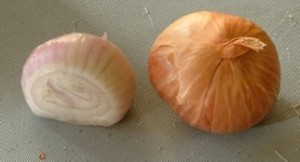
Aren’t I pretty? I’ll eat your soul alive!
Meditation and yours truly have a long, ongoing flirtation. Over the last decade, I’ve winked and twisted my hair at my fleeting suitor and sometimes he winks back. Mostly, though, he uses me in a torrid fling and then casts me aside like yesterday’s garbage. And then I weep silently until I summon the courage in another few years to give him another try.
Not this time! This time, I’m going to conquer him! I’m going to be the one who uses him. I’m going to wring every last positive benefit from his fickle carcass and then I’m going to use him again. Or so I’m telling myself.
Until I can master him, I’m going to console myself by telling my tale.
First Courtship
Meditation and I met each other a decade ago when I ended up in another brief affair with a yoga studio in Berkeley. That flirtation was rather dull, aside from a Ganesh puja I participated in (awesome!), but the meditation class I signed up for wasn’t. What it was could only be described as difficult. Really difficult, in ways I couldn’t have imagined when I whipped out my checkbook.
The first basic tenet of meditating is that you should be silent. Unless, of course, you’re chanting. This is usually a no-brainer. Words aren’t things I utter unless I’m around people, and even then, unless I’m discussing ideas or something of vague interest, I tend to keep them to myself unless I’m debating myself in the shower. Except meditational silence isn’t the kind I’m used to maintaining. It’s a mental silence. It’s a place where thoughts flit by like little chirping birds, or drift serenely like clouds. Just a blip and then quiet.
That isn’t my brain. Not by a long shot.
Still, after trying a number of techniques over the six weeks, which, coincidentally enough, were the last few before I got married, I sensed the mind’s true depth.
I can’t remember much about the meditation itself. It must have been guided, and I must have been sitting in a chair, because I could never do the cross-legged thing for the two hours the class lasted. All I know was that the layers of my mind peeled aside like an onion as I delved deeper. Emotions went away first, then all of the random minutiae of the complete life change ahead of me. Then went my sense of the universe, my intuition. After that, I arrived at the core.
We were supposed to sit and observe that core without judging, in complete mental silence, and to tell the class about the image we received once we emerged. Mine was a lone scientist alternating between a telescope and a microscope. I knew her by name.
“She’s the unbiased observer,” I said.
I got a few profound nods in acknowledgement. Sweet, I finally mastered meditation! I thought. And then I got married and forgot all about breathing and peeling away layers of thought and listening to other people chant in the presence of harmoniums.
Besides, I’d mastered meditation.
The Fourteen Day Twenty-One Day Challenge
Flash forward eight years. Things aren’t going so well outside of the marriage department. I’m trying to wrestle with the emotional wreckage of a couple of disastrous failures, and I’m drowning in a sea of emotion. I’m dealing as best I can. I’ve started practicing yoga, but only the DVD variety. I browse to Huffington Post’s GPS for the Soul which I’ve taken to reading. It’s of dubious use, usually, but sometimes there’s something good.
This time it was an ad for Deepak Chopra’s 21-Day Meditation Challenge that caught my eye. It was free. And only 21 days. I could do that with one eye tied behind my back.
Right.
It started off well enough. I sat down and listened to the introduction. I breathed and chanted “So hum” to myself with every inhalation. The music was pretty, a nice mix of sitar and New Age synth. You know, one of my favorite things to listen to. The voice was soothing. I opened my eyes at the end of the twelve minutes oddly relaxed. Then I did it again. And again.
And then came the journey. See, I’d started the challenge thinking I was going to relax and quiet my mind. To embrace the oneness of self and universe, and to flow with the currents of possibility. To find the place beyond anxiety and pain. Except, meditation number 7 was all about delving back into crap, and dredging up random traumas in all their full detail. The kind of traumas that really aren’t, but sometimes come to mind and then go away after a few seconds of emotionless pondering.
My instigator floated on a cloud next to my serenely speeding cloud in the crystalline blue sky. Who was it? I hadn’t thought of him in years. I hadn’t needed to.
What did (s)he do to you? Write this person a letter, and read it aloud to them as you float along side by side, said my tormenting guide.
I wrote the letter. I read it aloud. As the guide of my vision spoke, I set the letter on fire and told my long-forgotten ex, “I forgive you.”
Except I hadn’t. I didn’t care enough to forgive because I’d already mostly forgotten. I spent the rest of the evening in a funk, because all the details of all the years-ago pain came back. Thanks, Deepak!
The next seven days, I listened to a bunch of chant mp3s and mentally repeated “So hum,” as I inhaled and exhaled. The irritation never quite left, and meditation’s unpleasant house-guest came for a long, exhausting stay.
The Fourteen Day Slump
Meditation’s a crappy janitor. His loud guest, Mr. Energy-Slurping Shop Vac, takes control of his flaky steerage and sucks the wrong things from my head. I’m supposed to lose the anxiety and stress of life, not what limited energy I have left. Instead, anxiety hides away from the Shop Vac of Slumber, lodging itself permanently in my chest, and my worst thoughts run wild. My will takes a deep nose-dive, and alertness gets sucked away into meditation’s voracious gut.
Yep, I’m talking about the 14-day sleepies.
I was relaxed early in the process, and the good inner peace sort of relaxation. I was harmony, I was flow, I was serenity. And then I was asleep from the eighth day on. Ten hours a night, and two more hours during the day. My waking hours were dulled and lifeless, and when I did manage to have a slight energy peak–VZZZZZZH!–the Shop Vac would suck it away.
On day fifteen, I told myself, “Enough!” and I quit.
And my sleep went back to normal.
ConZentrate! The Game is On!
Another year went by. Stuff happened, both good and bad. And then, suddenly, my mother-in-law had a major catastrophe: a heart attack and then a stroke that left her paralyzed on the left side. I haven’t been able to relax since April.
What better to blunt the edges of constant anxiety and grief than meditation, right? My suitor began another seduction attempt. I’ll help you control your emotions! I’ll help you master your thoughts! I’ll help you relax!
By making me sleep my life away? I asked him.
I knew his mischievous grin too well and that I was going to give in to his false charms.
This time, I was armed. I was going to take meditation slow and steady. I was going to start out by searching out an app with a timer. I was going to progress slowly. I was going to enjoy the process, dammit! I was going to level up!
Dharma Meditation Trainer promised a good start in gamifying meditation. I made it to level 2, then three, and then four. I breathed mindfully and allowed thoughts to drift through me as I returned to my breath. I was Zen incarnate as I waited for the chime to go off, patiently. I was peaceful, I was bored for ever longer periods. I wanted to shoot myself.
I started napping again after fourteen days. VZZZZZZH! The Shop Vac slurped out the last of my energy.
Then I thought, “I love games! I love leveling up my Steam profile—maybe I can find some way to gain achievements!”
I started ConZentrating. I got new balls. I unlocked new chants. New backgrounds for the bouncy ball that my eyes followed for five minutes at a time. Ommmm! Then, I figured with all my achievements, I could go back to the Dharma Meditation Trainer and exploit the tiredness so I could sleep again at night.
I did five minutes of bouncy ball focus just after having coffee and five-then-six-then-seven minutes of boring breathing before I went to bed.
I made it to a solid month with both. My will to live joined my energy in the Shop Vac’s guts. My creativity was starting to follow.
You won’t win, Meditation! There are lots of different forms of you I can try! With this in my head, I browsed every New Age bookstore I could find. I came across a book that sounded promising: Meditation for Your Life: Creating a Plan that Suits Your Style by Robert Butera. Well, personality influences everything else, so why not meditation?
The book was packed with questions. Exercises. Introspecting on things that really don’t require thinking about. Lots and lots of journaling. But the goal was simple: to find a form of meditation that wouldn’t suck my life away. So I did them. I delved into things that should be un-delveable. I drew stupid pictures of stick figure me and drew circles around the stick figure and wrote out everything I liked and disliked. I put in a huge amount of effort over the space of three weeks and filled pages and pages with pointless emo wankery, all in the interests of finding the type of meditation that wouldn’t kill me.
Finally, I’d had it. I read ahead, and made it to the Sentence of Doom.
The only solution is old-fashioned trial and error.
Yes, I’d just wasted weeks for nothing. I’d lost. Meditation had won. I’d been mastered.
A Labyrinthine Problem
Well, back to the drawing board. I quit my ConZentrating and my Dharma Training. My energy returned. I found a blog post somewhere suggesting that guided meditation might be the solution to getting out of my head for a few minutes a day. I found The Voice of the Muse Companion: Guided Meditations for Writers by Mark David Gerson. They were pretty relaxing and focused. I’ve made a little peace with my inner critic but haven’t rediscovered my missing deep relaxation.
I’d always been vaguely intrigued by labyrinths. Something about staring into the pictures I’d seen sent me spiraling off into my inner universe and I’d read about the inner tranquility legions had achieved by tracing their convoluted paths. Besides, walking a labyrinth just once couldn’t hurt, could it?
According to Labyrinthlocator.com, my area is lousy with them. In fact, there are two or three within ten minutes of me.
Some labyrinths are inlaid tiles. Some are paved stones set within dirt. Some are spirals of paint on concrete. Guess which one I ended up trying today?
It was striking. If I stared into the heart, my mind would whirl as I tried to trace a mental course. I’d never thought white paint upon red concrete could be beautiful, but this was. Even though traffic sputtered by just a few feet away, I could almost feel the tranquility calling me within.
Yes, walk with me, meditation whispered. Bask in my promise!
I should have walked away right then.
But I walked. I watched every step as I made my way around the narrow tracks. I switched forward, I switchedback. I spiraled. I kept my feet within the confines of the lines, just wide enough for a man’s single footfall, and I had to pay attention to my balance to keep myself from toppling over during the narrow turns. It must have taken me ten minutes to reach the center, a mere five steps away from the entrance.
I didn’t feel any more Zen, even though the labyrinth was surrounded by a high bush and a stand of trees that rustled in the gentle breeze. The sun was shining, and tiny clouds scudded across the brilliant sky. I should have felt myself slip into the inner relaxed state I used to achieve effortlessly only a few months ago.
I should have walked away.
Instead, I reversed course, trying to figure out if I’d actually skirted the center boundaries. I couldn’t remember doing it. My mind tried to plot the next turn, and the following turn on the way out. I twisted and turned again. I almost left when I finally reached the exit.
That’s it? I thought. I had a second chance to walk away. How many times are you supposed to walk through a labyrinth anyway?
Instead, I did it all over again. And reversed course again. This time, I could see where I went through the near-center points. My feet were a little surer, but my mind wasn’t. I wasn’t clean or clear. Instead, I wanted to yawn.
Meditation had returned with Mr. Energy-Slurping Shop Vac, and both were determined to make me lose my zest for life.
I drove home. Then I slept for an hour, the VZZZZH! loud in my ears.
I hate labyrinths, I really do. That was the only insight to come out of this afternoon’s meanderings. Labyrinths are convoluted, tangled. They’re as twisty-turny as life is, but unlike life, which is an infinite array of choices spread out before you, there’s only one true course ahead of you. And only one way out, if you’re to honor the experience properly. I really hate that. Life is possibility. Life is change. Life is a universe of potential. Labyrinths are a deliberate restriction, a single pointless path into a center of nothing. A false universe.
And they’re boring, unless you’re contemplating them from a photo.
And where does that leave me?
Dunno. Am trying some binaural beats, and I’ll maybe do a guided visualization or two. I’ll shake hands with my inner critic a few more times and say hello to my muse.
And then I’ll get a massage. Then do a yoga class. And feel the axé in my next roda.



